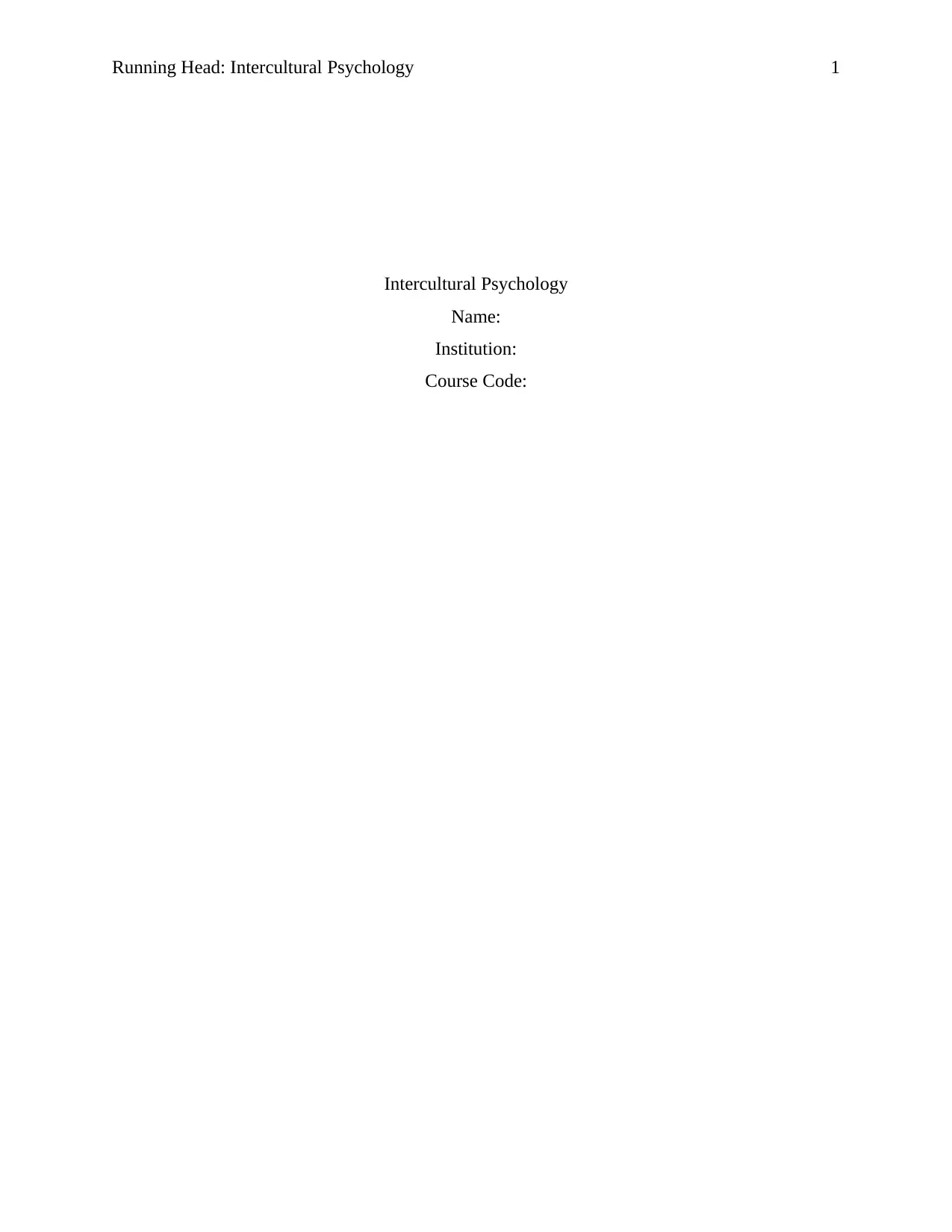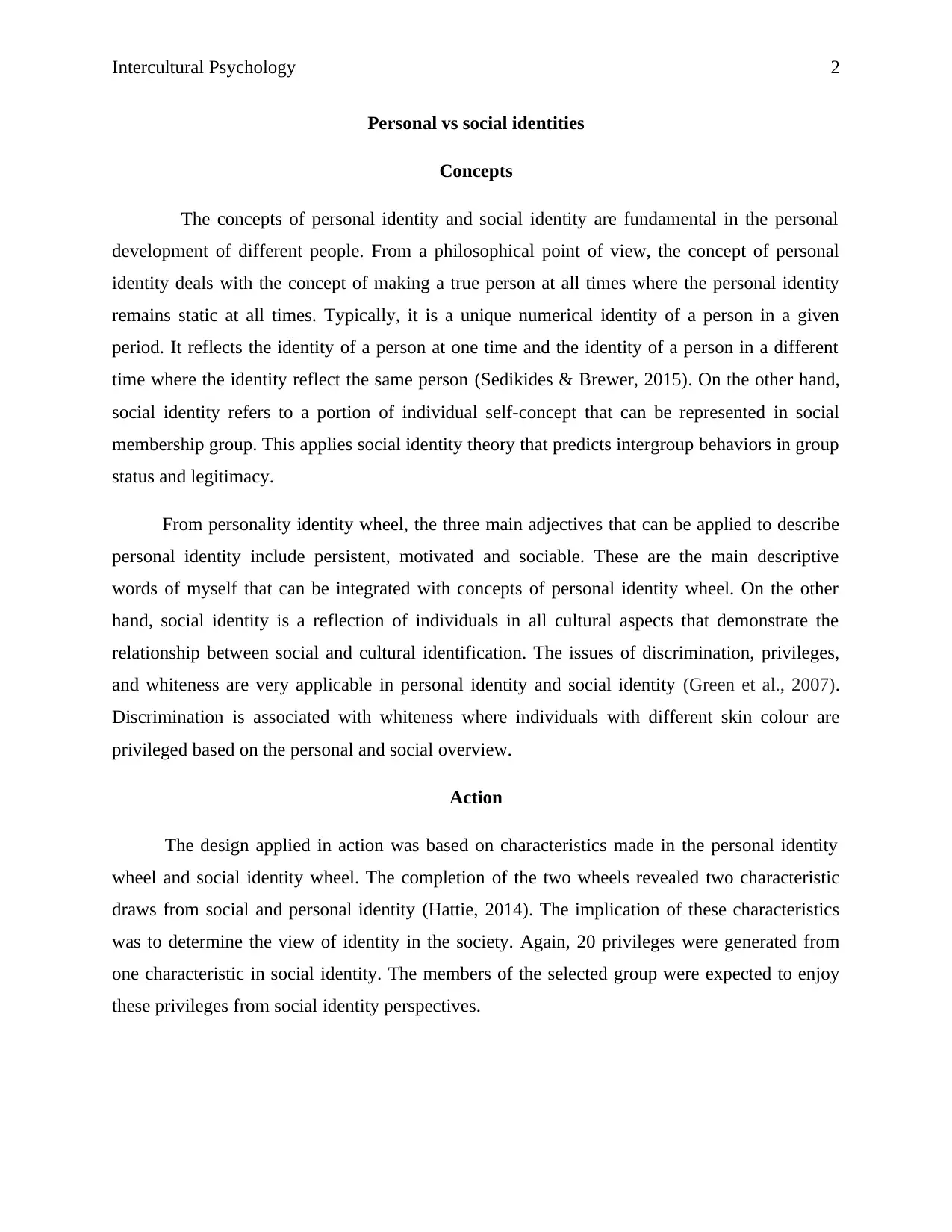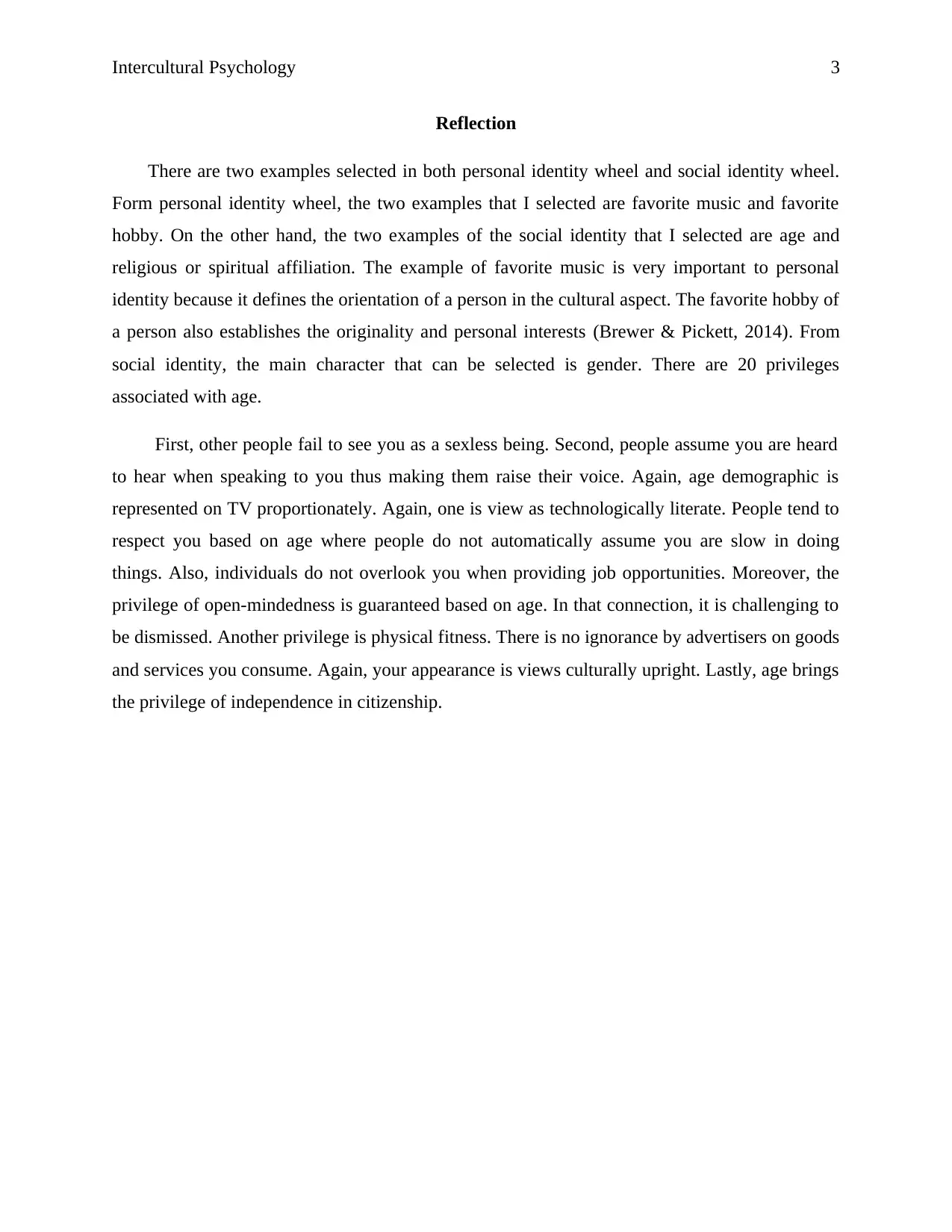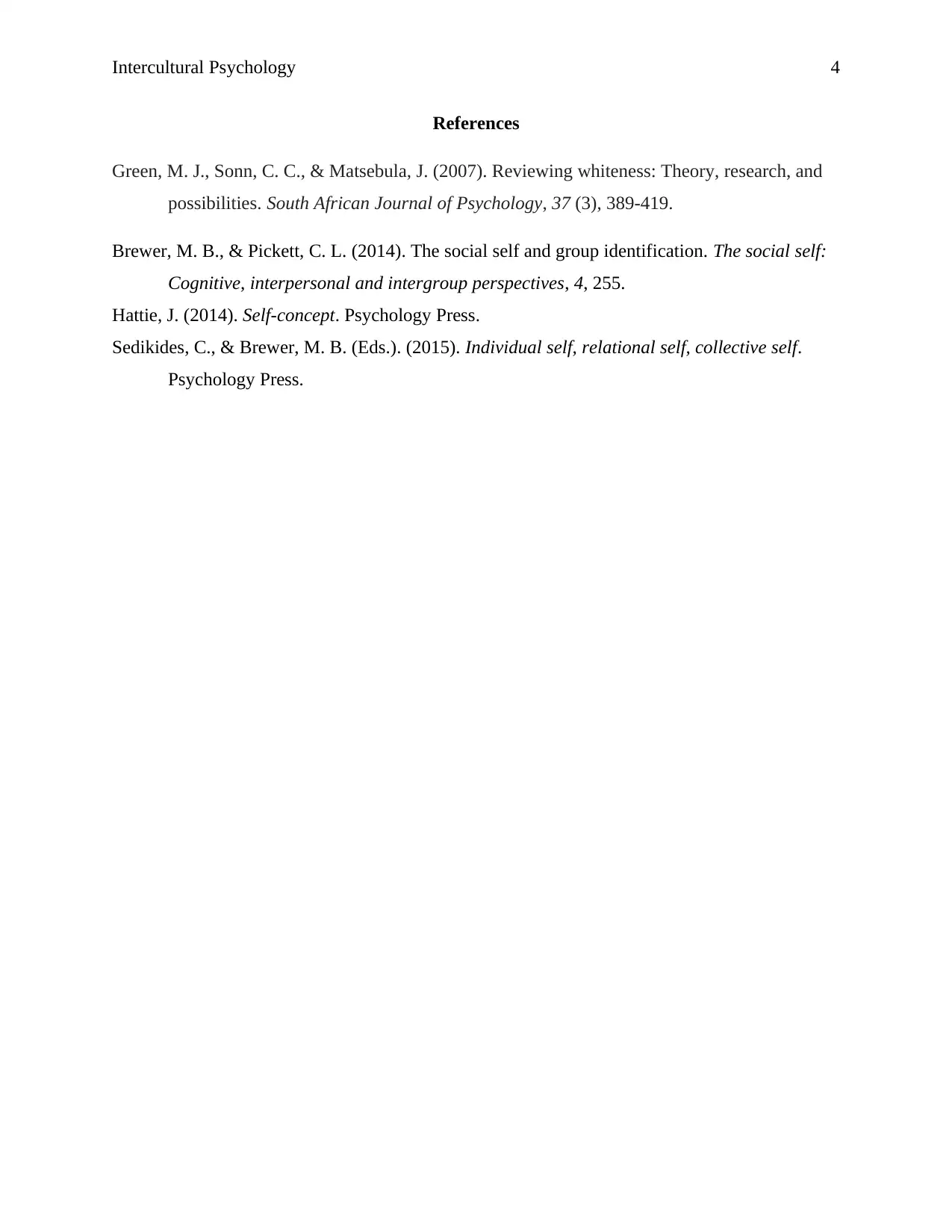Intercultural Psychology: Analysis of Personal and Social Identities
VerifiedAdded on 2023/06/13
|4
|767
|257
Essay
AI Summary
This essay delves into the concepts of personal and social identities within the framework of intercultural psychology. It begins by defining personal identity as a static, unique numerical identity and contrasting it with social identity, which is linked to group membership and intergroup behaviors. The author uses a personal identity wheel to describe themselves as persistent, motivated, and sociable, while also reflecting on social identity in relation to cultural aspects, discrimination, and privilege. The essay then discusses actions based on characteristics from both identity wheels, including the generation of privileges associated with social identity. Reflection focuses on examples like favorite music, hobbies, age, and religious affiliation, highlighting the cultural significance and privileges associated with each. The essay concludes by referencing relevant academic sources to support the analysis of these complex concepts.
1 out of 4









![[object Object]](/_next/static/media/star-bottom.7253800d.svg)